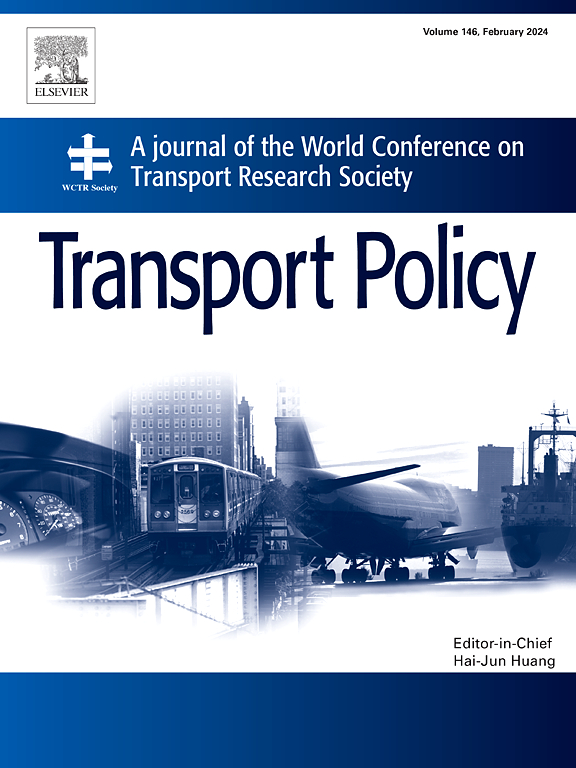中国陆路货运电气化对实现碳中和的政策影响
IF 6.3
2区 工程技术
Q1 ECONOMICS
引用次数: 0
摘要
电气化是目前中国陆路交通领域最有希望实现脱碳的技术。已经提出或采取了经济激励和监管措施,以推广电动卡车和火车。然而,实现碳中和的政策路径及其成本和收益仍不明确。本文提出了陆路货运部门的动态经济-环境综合评估模型,并应用该模型模拟了 2021-2060 年间不同政策路径的影响。结果表明,中国陆路货运业可在 2029 年至 2040 年达到碳峰值,到 2060 年实现碳中和,平均碳减排成本在 2346 元/吨至 61 元/吨之间。由于目前电力系统的高碳强度和电动卡车的高成本,在 2031 年之前在陆路货运领域推广电气化既不经济也不环保。然而,从长远角度来看,与延迟电气化方案相比,匆忙电气化方案可以节省 5.34 千兆吨的碳预算,但代价是在前十年(2021-2030 年)多排放 0.49 千兆吨的二氧化碳,累计投资多花费 74.42 万亿元人民币。政策制定者应注意这种短期与长期利益之间的权衡。此外,还分析了陆路货运部门碳中和政策路径的其他关键特征的影响,如路尾比和货运周转量增长率。本文章由计算机程序翻译,如有差异,请以英文原文为准。
Policy implications of electrifying land freight transport towards carbon-neutral in China
Electrification is currently the most promising technology for decarbonizing the land transport sector in China. Economic incentives and regulatory measures have been proposed or adopted to promote electric trucks and trains. However, the policy pathway to carbon neutrality and its costs and benefits remain unclear. An integrated dynamic economic-environmental assessment model for the land freight transport sector is proposed and applied to simulate the impact of different policy pathways during 2021–2060. The results show that China's land freight transport sector could reach carbon peak between 2029 and 2040, while becoming carbon neutral by 2060, with the average carbon abatement cost ranging from 2346 to 61 RMB/t. Due to the high carbon intensity of the current electricity system and the high cost of electric trucks, promoting electrification in the land freight transport sector before 2031 is neither economic nor environmentally friendly. However, from a long-term perspective, the hurry-up electrification could save 5.34 Gt of the total carbon budget at the cost of emitting 0.49 Gt more CO2 in the first decade (2021–2030) and spending 74.42 trillion RMB more in accumulated investment compared to the delayed electrification scenario. Policymakers should pay attention to such trade-offs between short-term and long-term benefits. The impacts of other key features of the policy pathway towards carbon neutrality of the land freight sector, such as the road-to-tail ratio and the growth rate of freight turnover, were also analyzed.
求助全文
通过发布文献求助,成功后即可免费获取论文全文。
去求助
来源期刊

Transport Policy
Multiple-
CiteScore
12.10
自引率
10.30%
发文量
282
期刊介绍:
Transport Policy is an international journal aimed at bridging the gap between theory and practice in transport. Its subject areas reflect the concerns of policymakers in government, industry, voluntary organisations and the public at large, providing independent, original and rigorous analysis to understand how policy decisions have been taken, monitor their effects, and suggest how they may be improved. The journal treats the transport sector comprehensively, and in the context of other sectors including energy, housing, industry and planning. All modes are covered: land, sea and air; road and rail; public and private; motorised and non-motorised; passenger and freight.
 求助内容:
求助内容: 应助结果提醒方式:
应助结果提醒方式:


